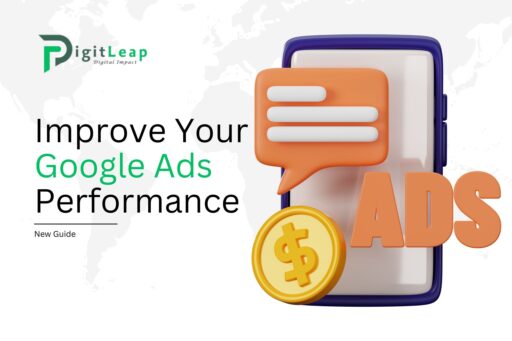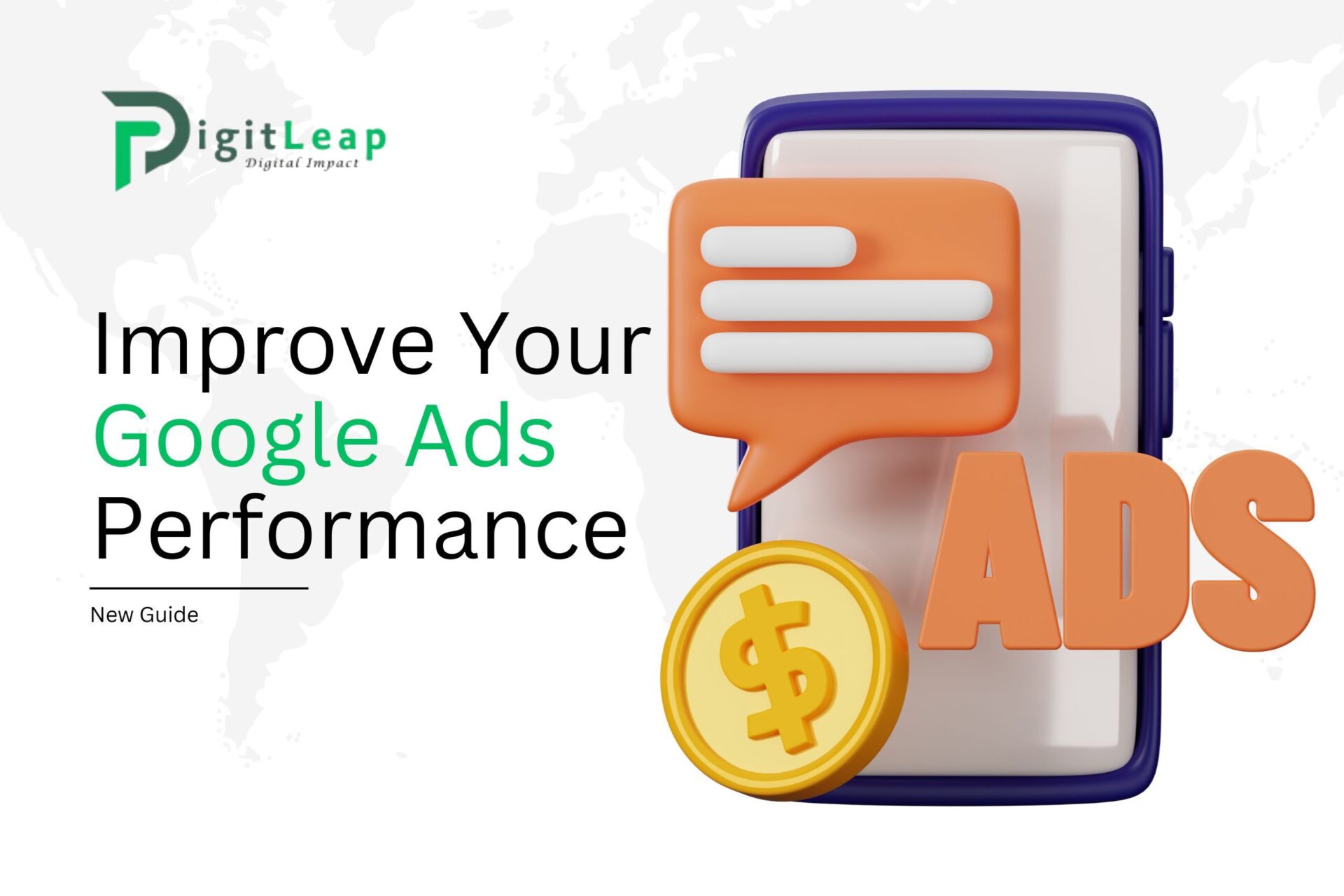New Guide: Improve Your Google Ads Performance
If you’re running a business online, you’ve probably heard of Google Ads. It’s one of the most powerful tools for driving traffic to your website, generating leads, and boosting sales. However, just setting up a Google Ads campaign isn’t enough. You need to optimize and continuously improve your performance to get the most out of your investment. This guide will walk you through some simple yet effective strategies to improve your Google Ads performance and help you reach your business goals.
Understand Your Goals
Before diving into the optimization process, it’s essential to know what you want to achieve with your Google Ads campaigns. Are you looking to drive traffic, generate leads, increase sales, or boost brand awareness? Having clear goals helps you tailor your campaigns to meet your specific needs.
For example:
- If you want more traffic, you’ll focus on increasing clicks.
- If you’re aiming for sales, you’ll concentrate on improving conversions.
Once your goals are set, you can measure your success based on key metrics like click-through rates (CTR), cost per conversion, or return on ad spend (ROAS).
Optimize Your Keyword Strategy
Keywords are the backbone of your Google Ads campaigns. Choosing the right keywords and organizing them effectively can make or break your performance. You want to target keywords that are relevant to your business, have high search volume, but also aren’t too competitive (and expensive).
Here’s how to optimize your keyword strategy:
- Use long-tail keywords: These are more specific and often have less competition, meaning they’re usually cheaper and can attract highly relevant traffic. For example, instead of targeting “running shoes,” you might target “best running shoes for flat feet.”
- Negative keywords: Don’t forget to add negative keywords. These are terms you don’t want your ads to show up for. If you sell premium products, you might add terms like “cheap” or “free” as negative keywords to avoid irrelevant clicks.
Regularly check your keyword performance and make adjustments based on the data. If certain keywords aren’t converting, consider pausing or removing them to focus on better performers.
Write Compelling Ad Copy
Your ad copy is what grabs people’s attention and persuades them to click. So, it’s important to make it as compelling and relevant as possible. Here are a few tips:
- Include your keywords: Make sure your primary keyword appears in your ad copy, especially in the headline. This makes your ad more relevant to searchers and helps with your quality score.
- Highlight benefits: Instead of just listing features, focus on how your product or service solves a problem or improves the customer’s life.
- Use a strong call to action (CTA): Encourage users to take the next step with a clear CTA like “Shop Now,” “Get a Free Quote,” or “Sign Up Today.”
It’s also a good idea to create multiple versions of your ads and run A/B tests to see which ones perform better. You can then refine your copy based on what resonates most with your audience.
Improve Your Quality Score
Google assigns each of your keywords a Quality Score, which is a measure of how relevant and useful your ad is to users. The higher your Quality Score, the better your ad’s position, and the lower your cost-per-click (CPC). Quality Score is based on factors like:
- Click-through rate (CTR)
- Ad relevance
- Landing page experience
To improve your Quality Score, focus on creating highly relevant ads that match the user’s search intent and lead them to a well-optimized landing page. The better your Quality Score, the more cost-effective your campaigns will be.
Optimize Landing Pages
It’s not just about getting people to click on your ads; it’s about what happens after they do. A well-designed landing page is key to converting visitors into customers. Your landing page should:
- Be relevant to the ad: If your ad promotes a specific product or offer, the landing page should directly relate to that.
- Load quickly: Page speed is crucial. If your landing page takes too long to load, visitors may leave before it even finishes.
- Have a clear call to action: Make sure it’s easy for visitors to know what to do next, whether that’s making a purchase, signing up for a newsletter, or filling out a contact form.
By aligning your ad with a high-quality, user-friendly landing page, you’ll improve both your conversion rate and Quality Score.
Monitor and Adjust Your Bids
Your bidding strategy has a direct impact on the performance and cost of your Google Ads. If you’re overspending on keywords that aren’t converting, you could be wasting a significant portion of your budget. On the other hand, underbidding on valuable keywords could mean losing out on important opportunities.
Here’s how to get the most out of your bids:
- Use automated bidding: Google offers several automated bidding strategies, such as Target CPA (Cost Per Acquisition) or Target ROAS (Return on Ad Spend), that optimize bids based on your goals. These can help you make more efficient use of your budget.
- Adjust bids based on performance: Regularly review your campaign’s performance data. If certain keywords or ads are underperforming, lower your bids. If others are driving conversions, consider increasing your bids to capture more traffic.
Bidding is a balancing act, but with regular monitoring and tweaking, you can maximize your return on investment.
Use Ad Extensions
Ad extensions are an easy way to add more information to your ads, making them more appealing and clickable. These extra features can increase your ad’s visibility and provide users with more reasons to click. Popular ad extensions include:
- Sitelink extensions: Add links to specific pages on your website.
- Call extensions: Include a phone number to make it easy for mobile users to call your business.
- Location extensions: Show your business’s physical address, which is especially helpful for local businesses.
Using ad extensions not only enhances your ad’s performance but can also improve your Quality Score by providing more relevant information to users.
Analyze Your Data
One of the biggest advantages of Google Ads is the wealth of data it provides. You can track every click, conversion, and cost, which allows you to make informed decisions. However, simply collecting data isn’t enough—you need to analyze it to improve your campaigns.
Focus on key metrics like:
- Click-through rate (CTR): The percentage of people who clicked on your ad after seeing it.
- Conversion rate: The percentage of clicks that lead to a desired action, like a purchase or sign-up.
- Cost per acquisition (CPA): How much you’re spending to get each conversion.
By reviewing these metrics regularly, you can identify what’s working and what’s not. This allows you to fine-tune your campaigns and allocate your budget to the strategies that deliver the best results.
Conclusion
Improving your Google Ads performance doesn’t have to be complicated. By focusing on optimizing your keywords, ad copy, bids, and landing pages, and regularly analyzing your data, you can create campaigns that deliver better results at a lower cost. It’s all about continuously refining your approach based on real performance data.
For businesses looking to take their Google Ads campaigns to the next level, DigitLeap offers expert assistance. We specialize in helping businesses optimize their paid search strategies to drive more traffic, leads, and sales. Let us help you improve your Google Ads performance and grow your business today!





